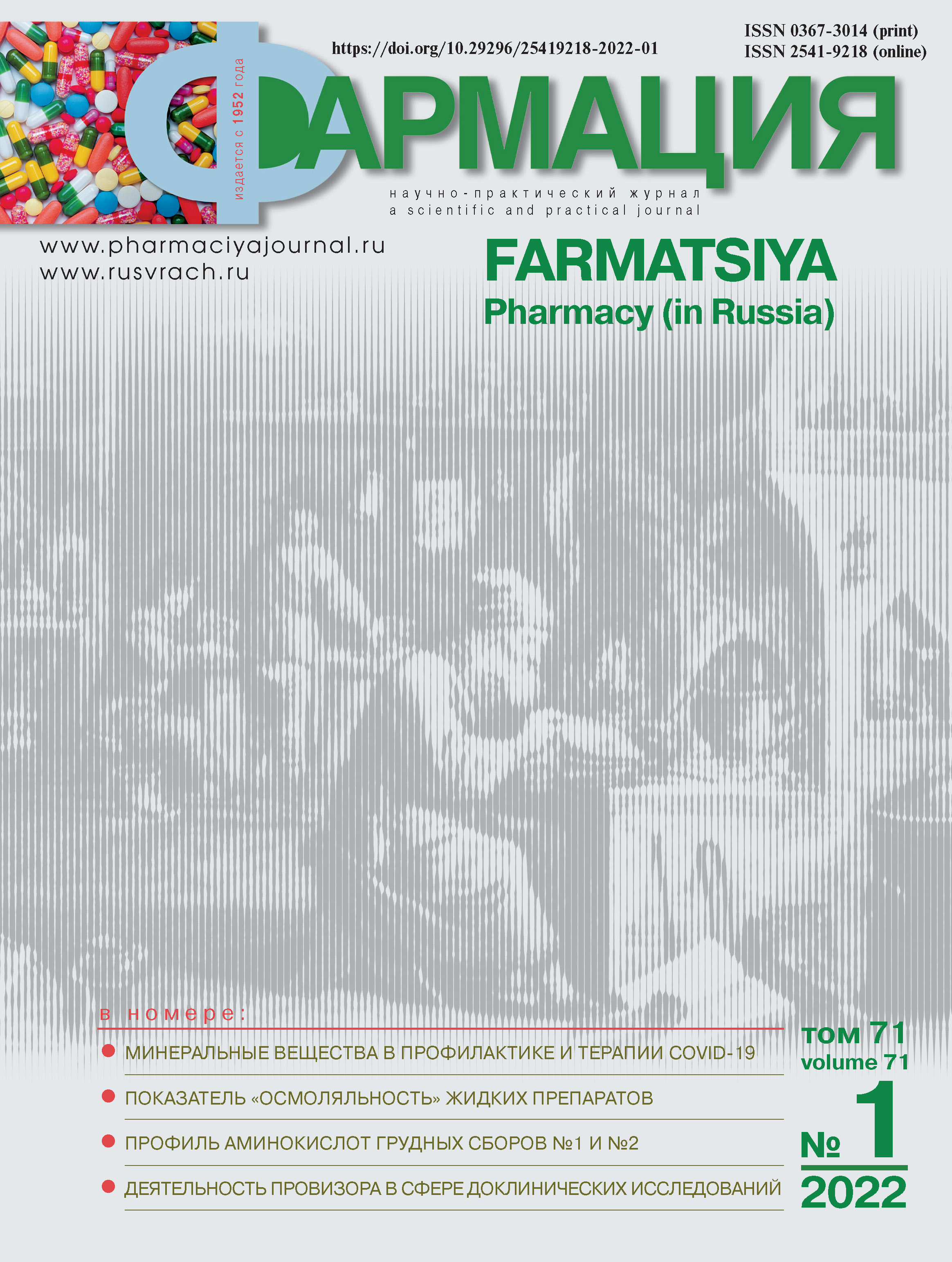Comparative study of the anatomical and morphological features of common ivy leaves from various habitats
- 作者: Solodukhina A.A.1, Gudkova A.A.1, Brezhnev T.A.1, Slivkin A.I.1
-
隶属关系:
- Voronezh State University
- 期: 卷 71, 编号 1 (2022)
- 页面: 26-32
- 栏目: Articles
- URL: https://journals.eco-vector.com/0367-3014/article/view/113617
- DOI: https://doi.org/10.29296/25419218-2022-01-04
- ID: 113617
如何引用文章
详细
全文:
作者简介
Anna Solodukhina
Voronezh State University
Email: ania.soloduhina@yandex.ru
Assistant of the Department of Pharmaceutical Chemistry and Pharmaceutical Technology, Faculty of Pharmacy 俄罗斯联邦,
Alevtina Gudkova
Voronezh State University
Email: alinevoroneg@mail.ru
Doctor of Pharmaceutical Sciences, Associate Professor of the Department of Pharmaceutical Chemistry and Pharmaceutical Technology, Faculty of Pharmacy 俄罗斯联邦,
Tatyana Brezhnev
Voronezh State University
Email: t_brezhneva@mail.ru
Candidate of Pharmaceutical Sciences, Associate Professor of the Department of Pharmaceutical Chemistry and Pharmaceutical Technology, Faculty of Pharmacy 俄罗斯联邦,
Aleksey Slivkin
Voronezh State University
编辑信件的主要联系方式.
Email: slivkin@pharm.vsu.ru
Doctor of Pharmaceutical Sciences, Professor, Head of the Department of Pharmaceutical Chemistry and Pharmaceutical Technology, Faculty of Pharmacy 俄罗斯联邦,
参考
- Справочник лекарств РЛС. [Электронный ресурс]. Режим доступа: https://www.rlsnet.ru/[Дата обращения 30.11.2020]
- Сарсенбаева С.С., Рамазанова Ш.Х. Комплексный отхаркивающий препарат тимьяна и плюща в схемах лечения детей с острыми респираторными заболеваниями. Медицина (Алматы). 2018; 9 (195): 47-53. doi: 10.31082/1728-452x-2018-195-9-47-53
- Бабинец Л.С. Эффективность сочетанного использования сальбутамола и экстракта плюща в амбулаторном лечении острого респираторного заболевания с бронхообструкцией. Современная педиатрия. 2019; 2 (98): 18-22. doi: 10.15574/SP.2019.98.18
- Яковишин Л.А., Гришковец В.И. Способ выделения главных тритерпеновых гликозидов из листьев плюща. Ученые записки Крымского федерального университета им. В.И. Вернадского. Серия «Биология, химия». 2018; 4 (70), 2: 226-34.
- Яковишин Л.А., Гришковец В.И. Сапонины фитокомплекса «Хедерикс+». Ученые записки Крымского федерального университета им. В.И. Вернадского. Серия «Биология, химия». 2015; 1 (67), 4: 163-9.
- European pharmacopoeia 8.0. [Электронное издание]. Режим доступа: https://archive.org/stream/EuropeanPharmacopoeia80/European-Pharmacopoeia-8-0#mode/2up [Дата обращения: 20.11.2020]
- Солодухина А.А., Брежнева Т.А., Сливкин А.И. Исследования по стандартизации растительного сырья плюща обыкновенного. Научный и инновационный потенциал развития производства, переработки и применения эфиромасличных и лекарственных растений. 2019; 196-202.
- Государственная Фармакопея Российской Федерации XIV изд. [Электронное издание]. Режим доступа: http://femb.ru/feml [Дата обращения: 20.11.2020]
- Пояркова А.И. Флора СССР. Москва-Ленинград: издательство Академии наук СССР, 1950; XVI: 3-17.
- Васильев Б.Р. Строение листа древесных растений различных климатических зон. Л.: Издательство Ленинградского университета, 1988; 208.
- Глазовская М.А. Почвы мира. М.: Издательство МГУ, 1972-73; 1-2: 665.
- Гаркуша, И.Ф. Почвоведение. Л.: Издательство сельскохозяйственной литературы, журналов и плакатов, 1962; 448.
- Архив погоды в странах мира [Электронный ресурс]. Режим доступа: https://world-weather.ru/archive/[Дата обращения: 20.11.2020]
补充文件









